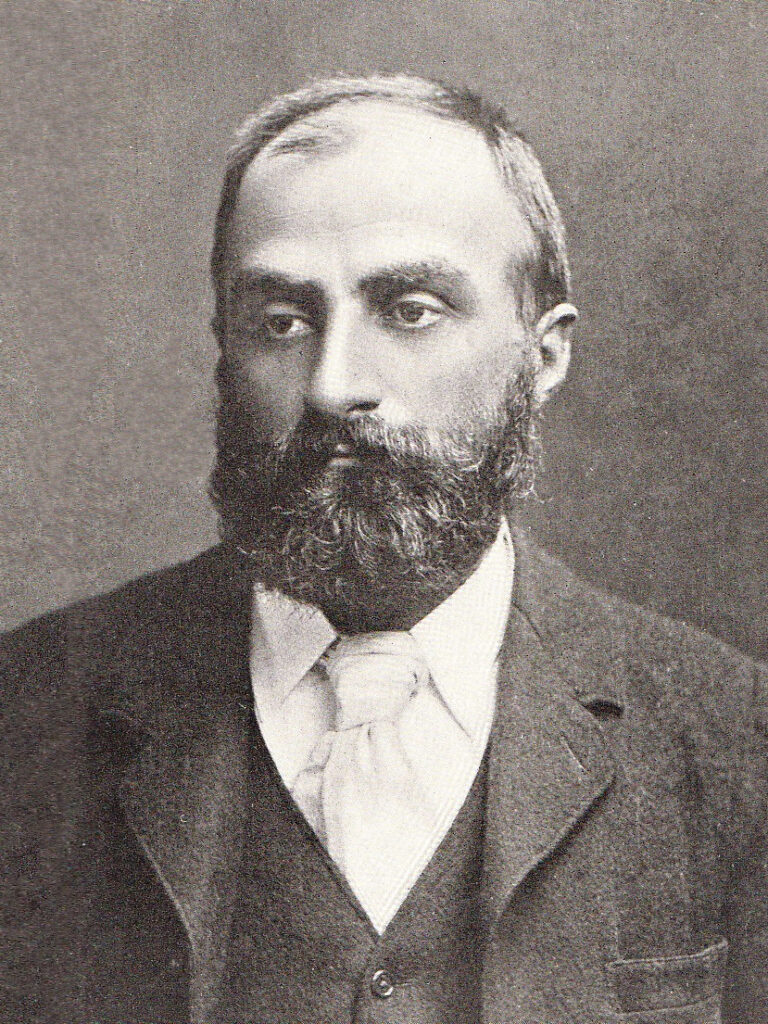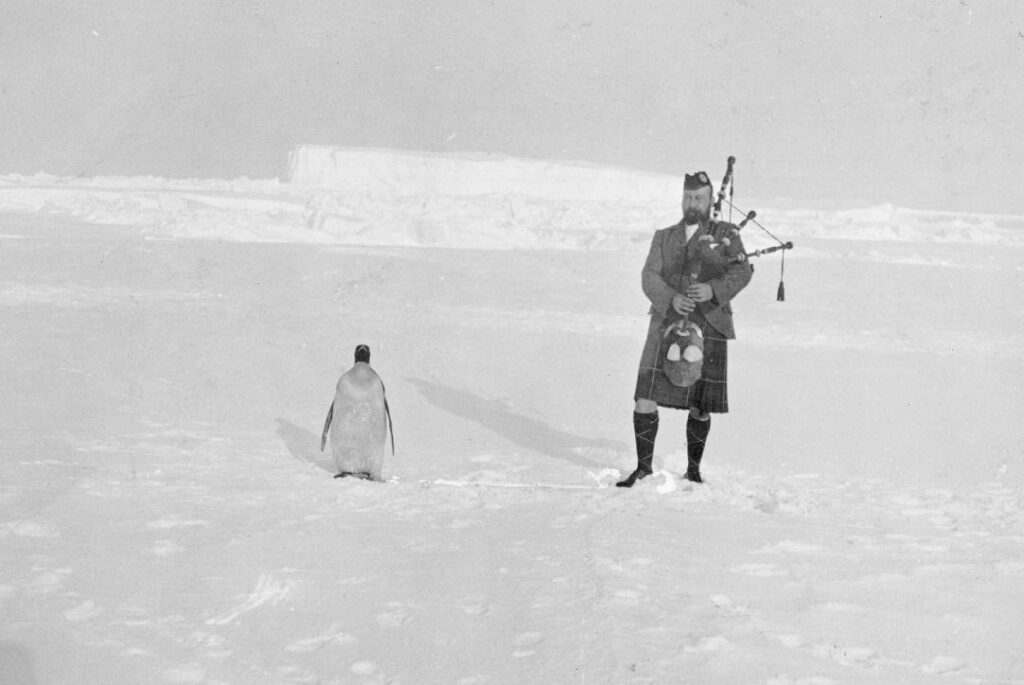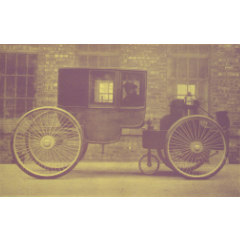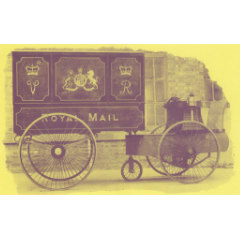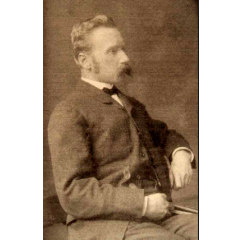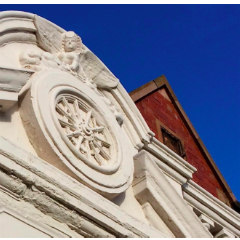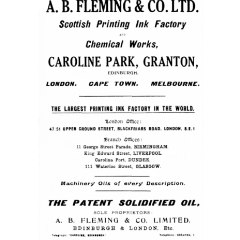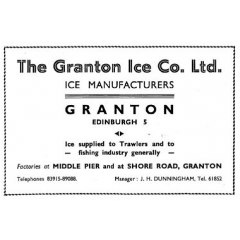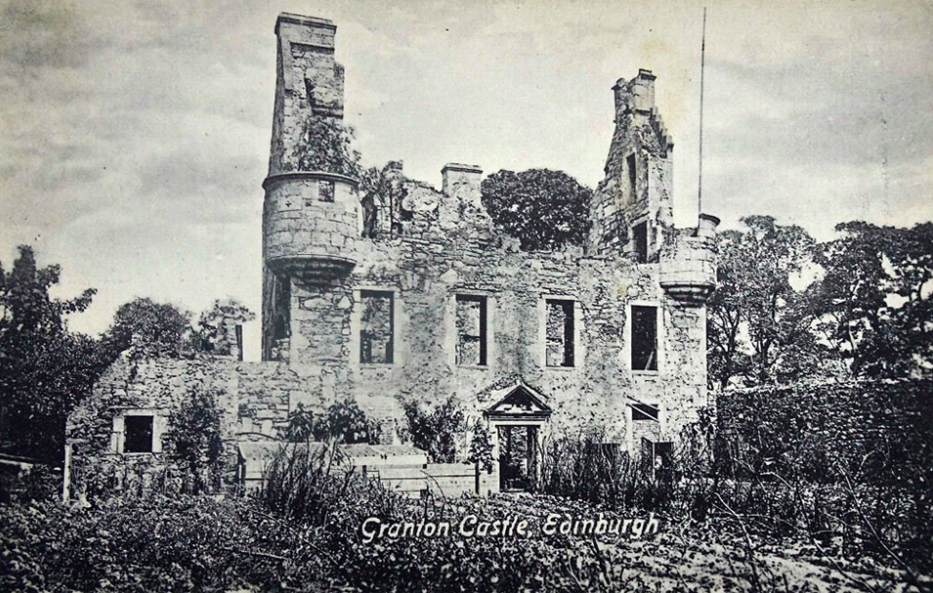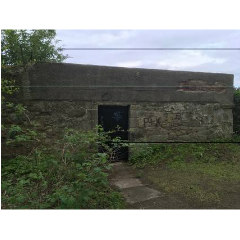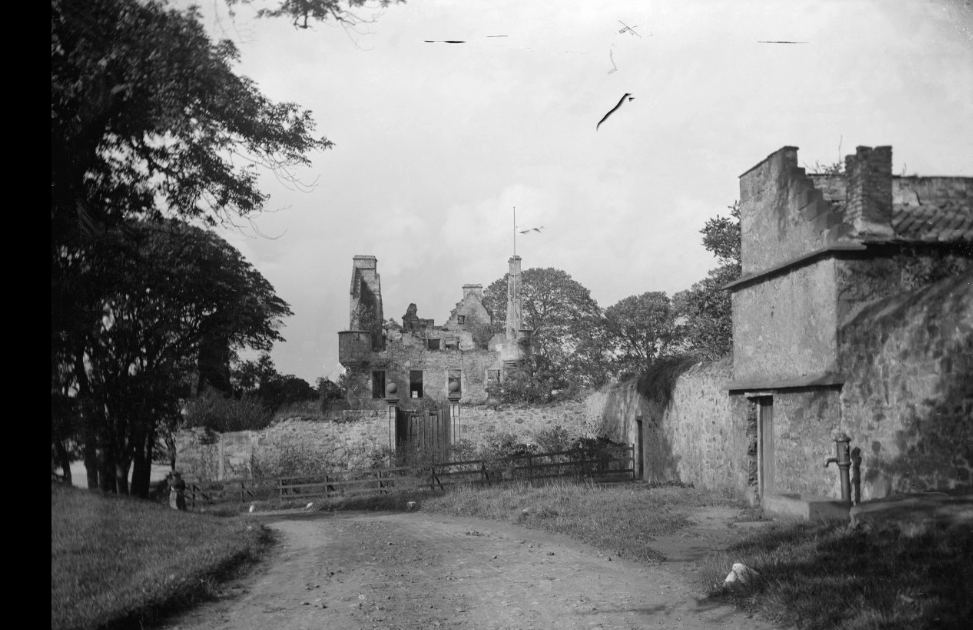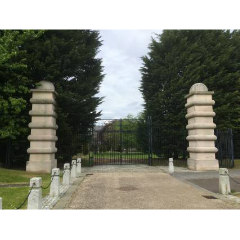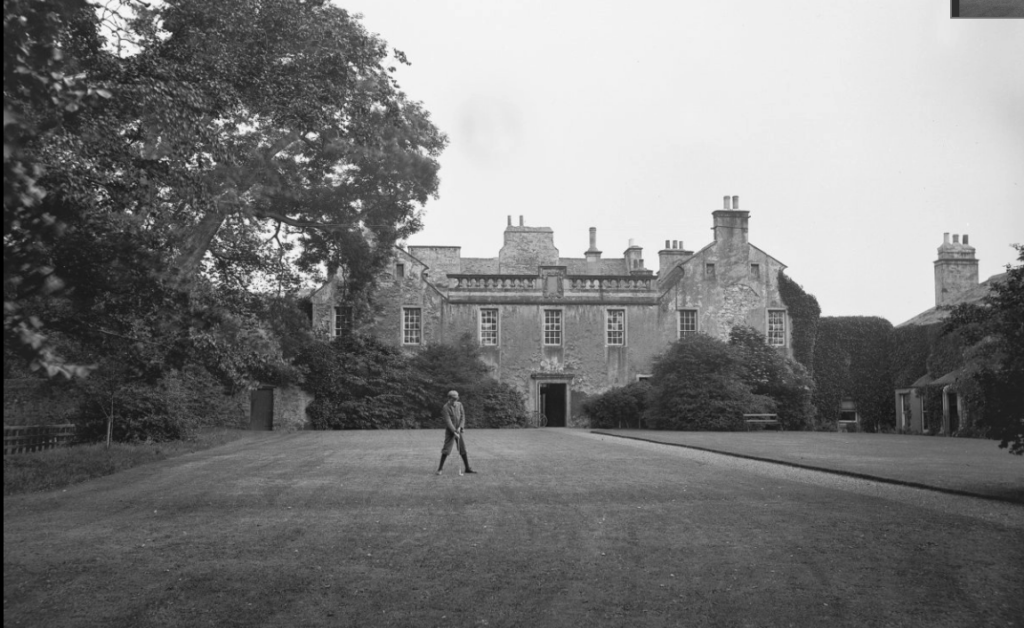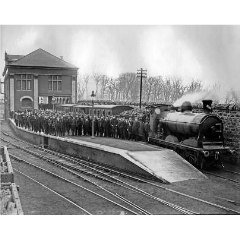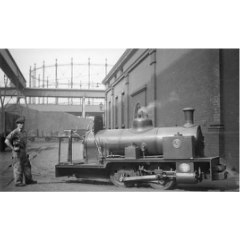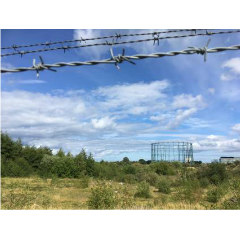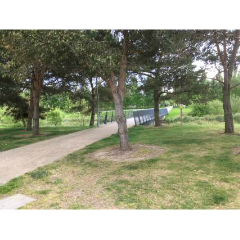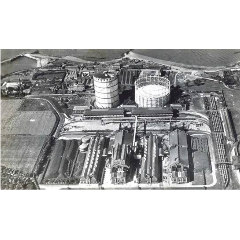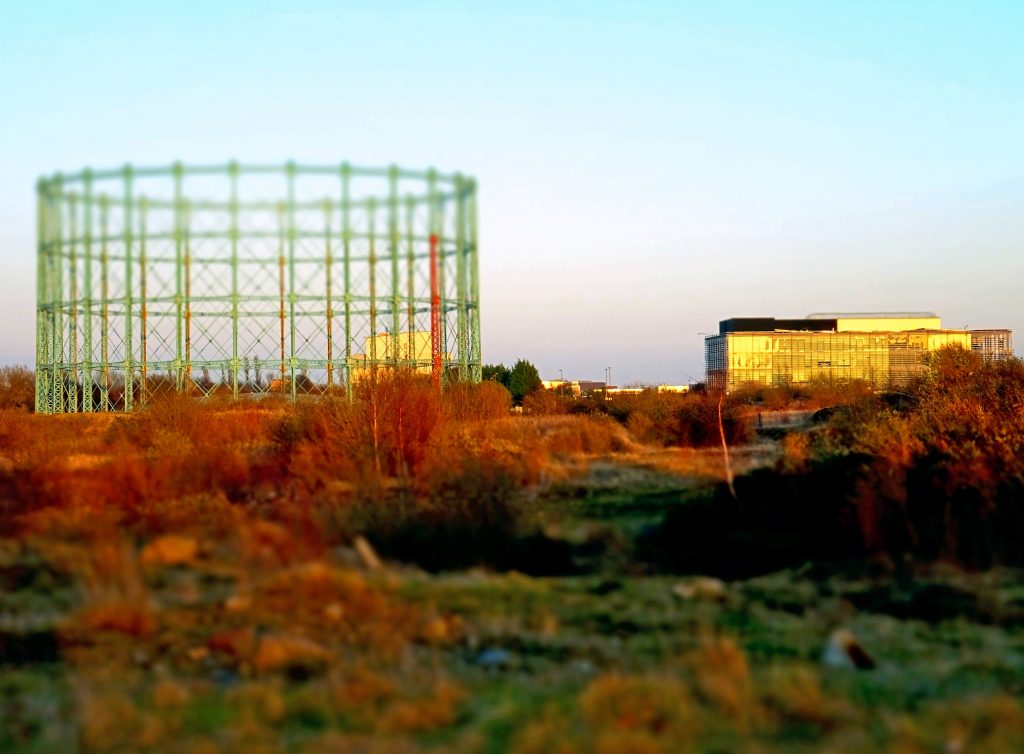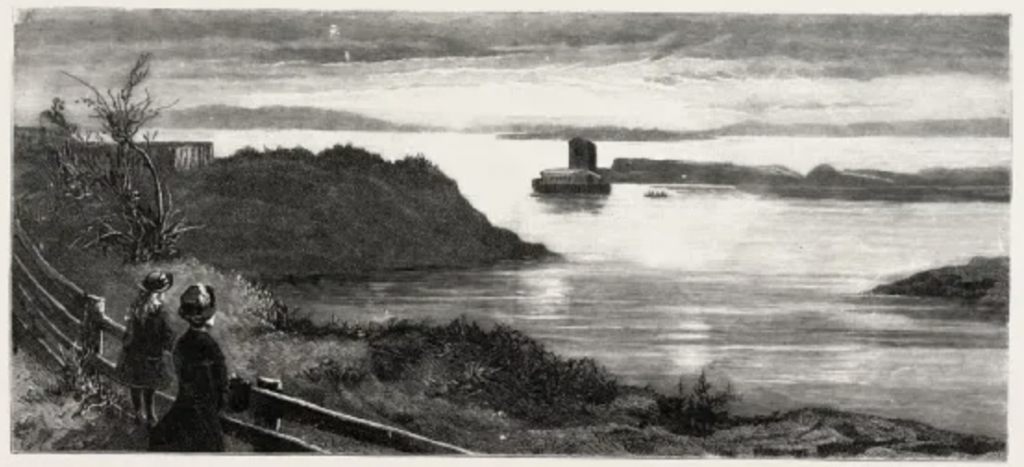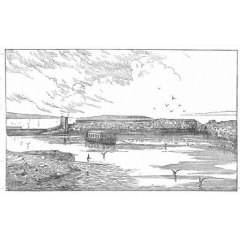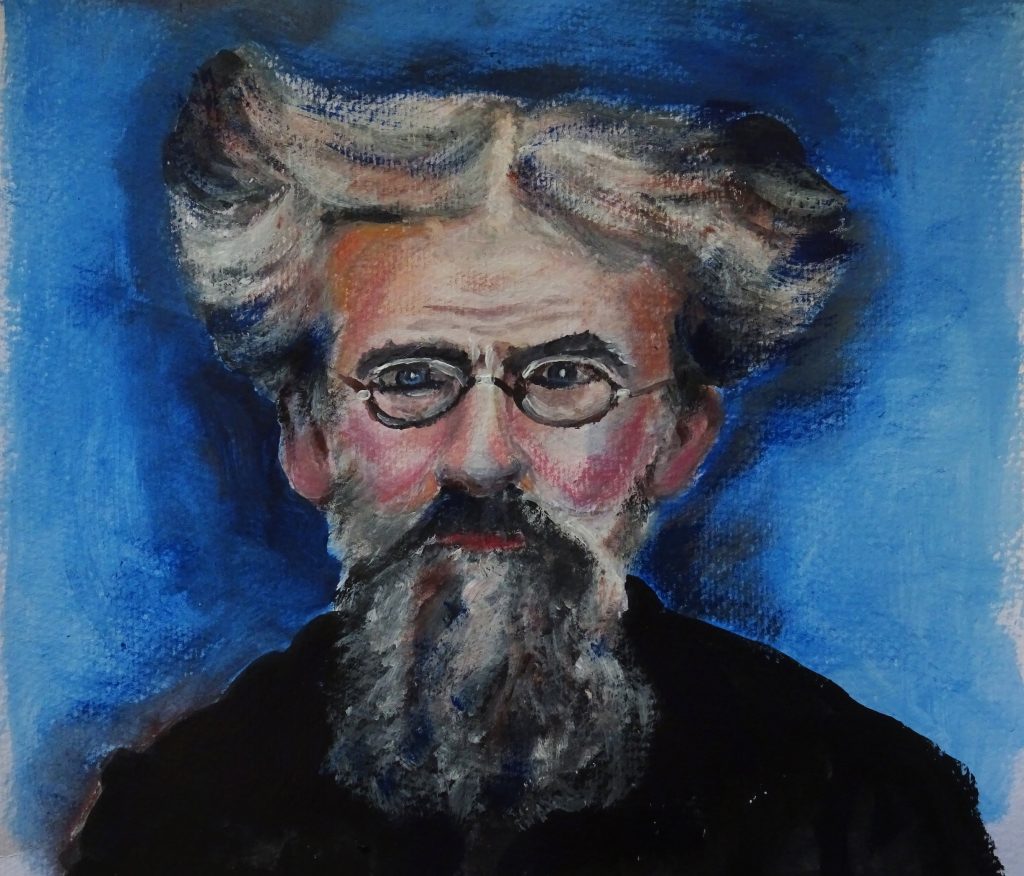Speirs Bruce Way, Edinburgh EH5 1QJ
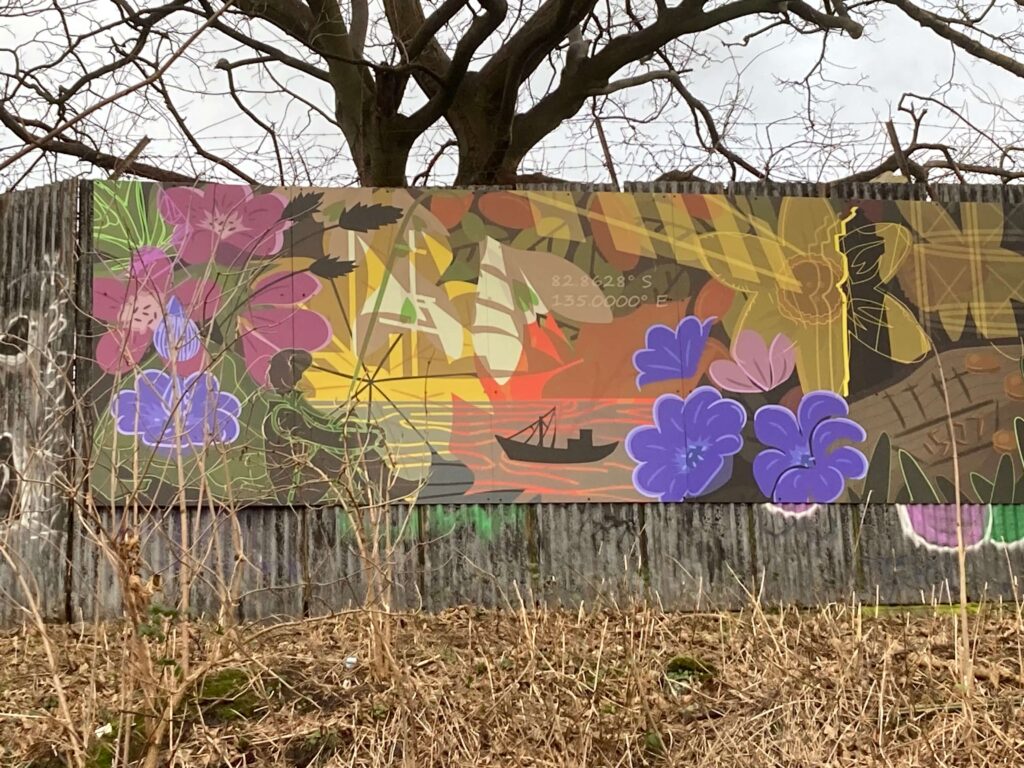
Granton:hub were awarded funding from Sustrans for a mural designed by Eve Murray telling the story on the history and culture of Granton.
1. Granton Oils – Manufactured inks in the late 1800’s with such success that it operated on a global scale.
2. Esparto grass – Esparto grass was a key component of paper production. Imports started in the 1870’s and by the 1950’s roughly a third of all UK imports came through Granton.
3. Ship – A reference to William Speirs Bruce and his work explained in the previous stop.
4. Fishing boat – trawling began with sail boats in the 1840’s and steam trawlers followed around the 1880’s. By the 1950’s approximately 17,000 tons of fish were passing through Granton harbour every year.

5. Train tracks – The long-abandoned Edinburgh, Leith and Newhaven Railway line, 1846-1925. its position in relation to the lighthouse suggests a beam of light, a connection, as well as the world’s first train ferry, the Leviathan, operational from 1849 to 1890 when the Forth rail bridge was completed.
6. Lighthouse – provides a symbol of the many lighthouses of Scotland that received goods and equipment delivered by the Pharos which berthed in Granton Harbour opposite Granton Lighthouse.
7. Gasworks – Built between 1898 and 1902. An example of Victorian architecture that has been given listed structure status and is now refurbished into a multi-functional public space.
8. 1507 – the date enclosed within a four-masted “carving” of a ship is a reference to the Great Michael. She was laid down at a purpose-built dock in Newhaven 1507 and completed in 1512. She was the largest war ship of her time. It is believed that her construction required all but one of the woods of Fife as well as timber sourced from other parts of Scotland, Norway, and France.
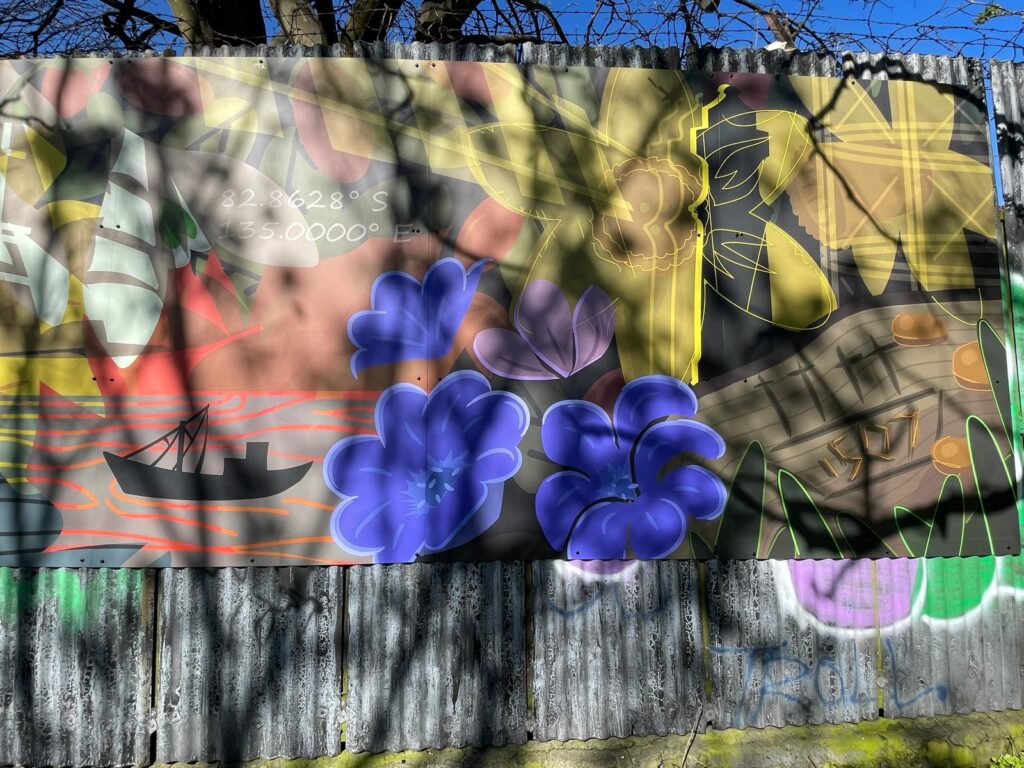
Across the road is the location of The Pitt Market which is open Friday to Sunday. if you now return to stop 17, for Caroline Park, you can finish the walking tour and visit two more locations taking you back to Madelvic House where the tour started.


